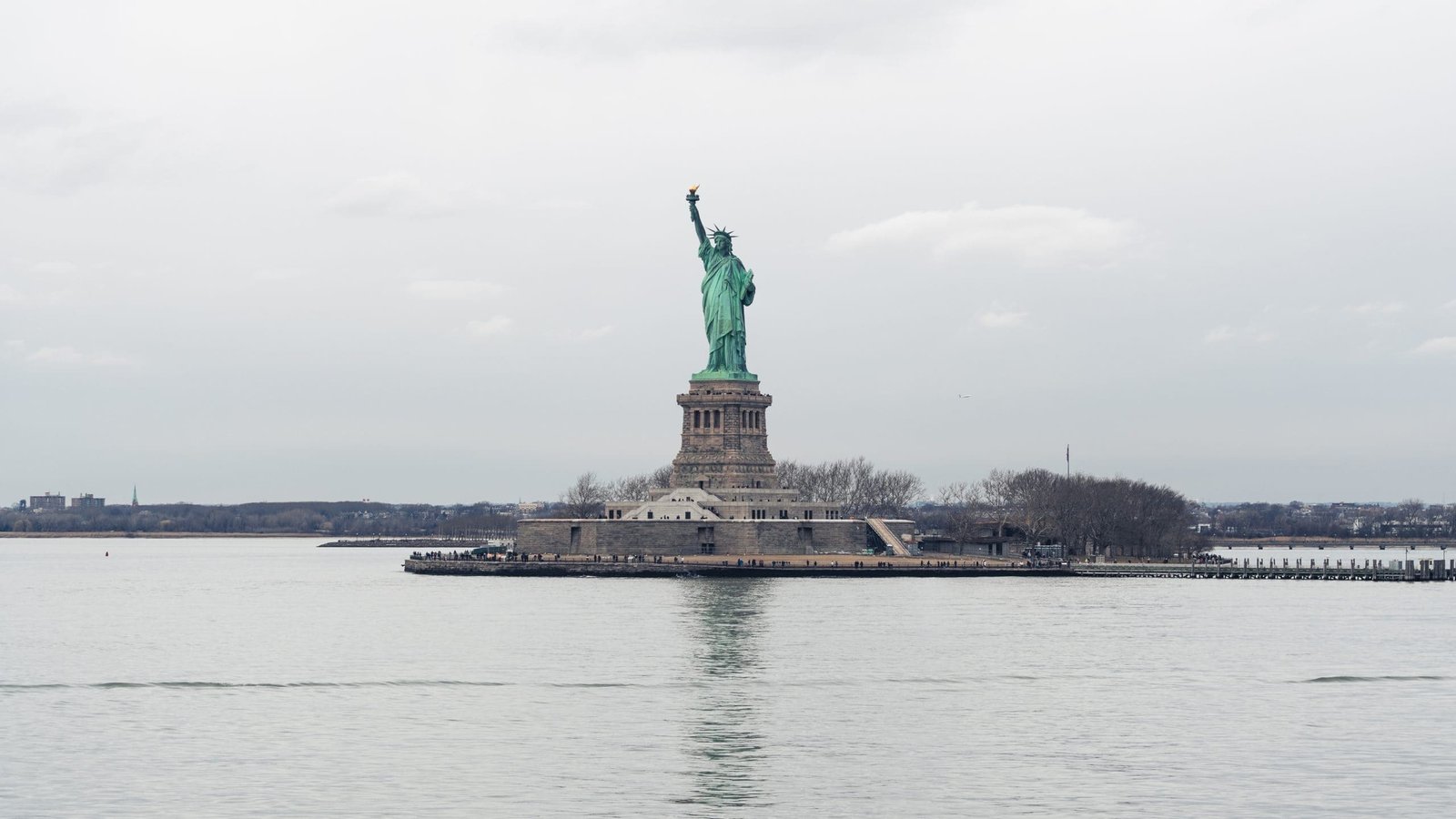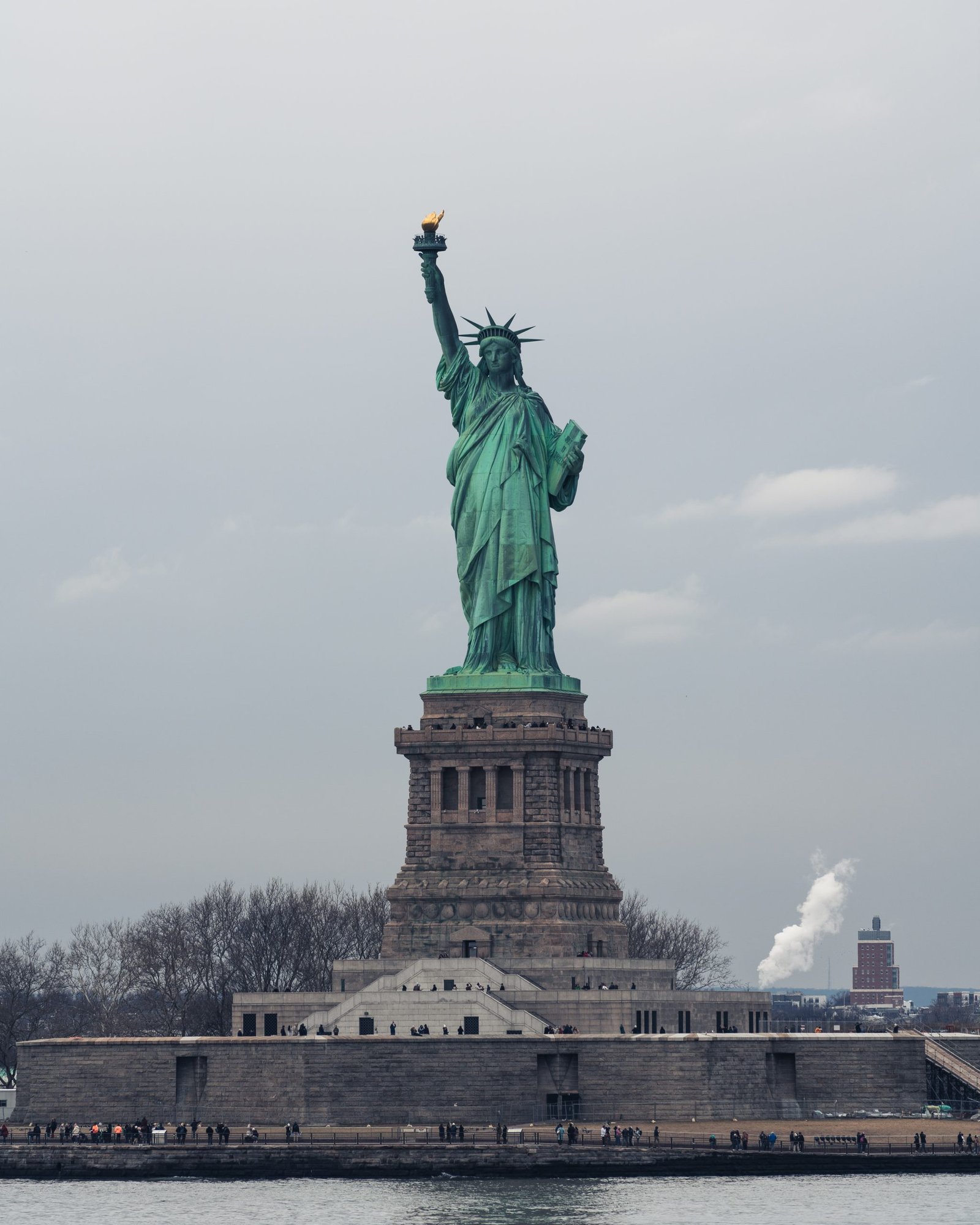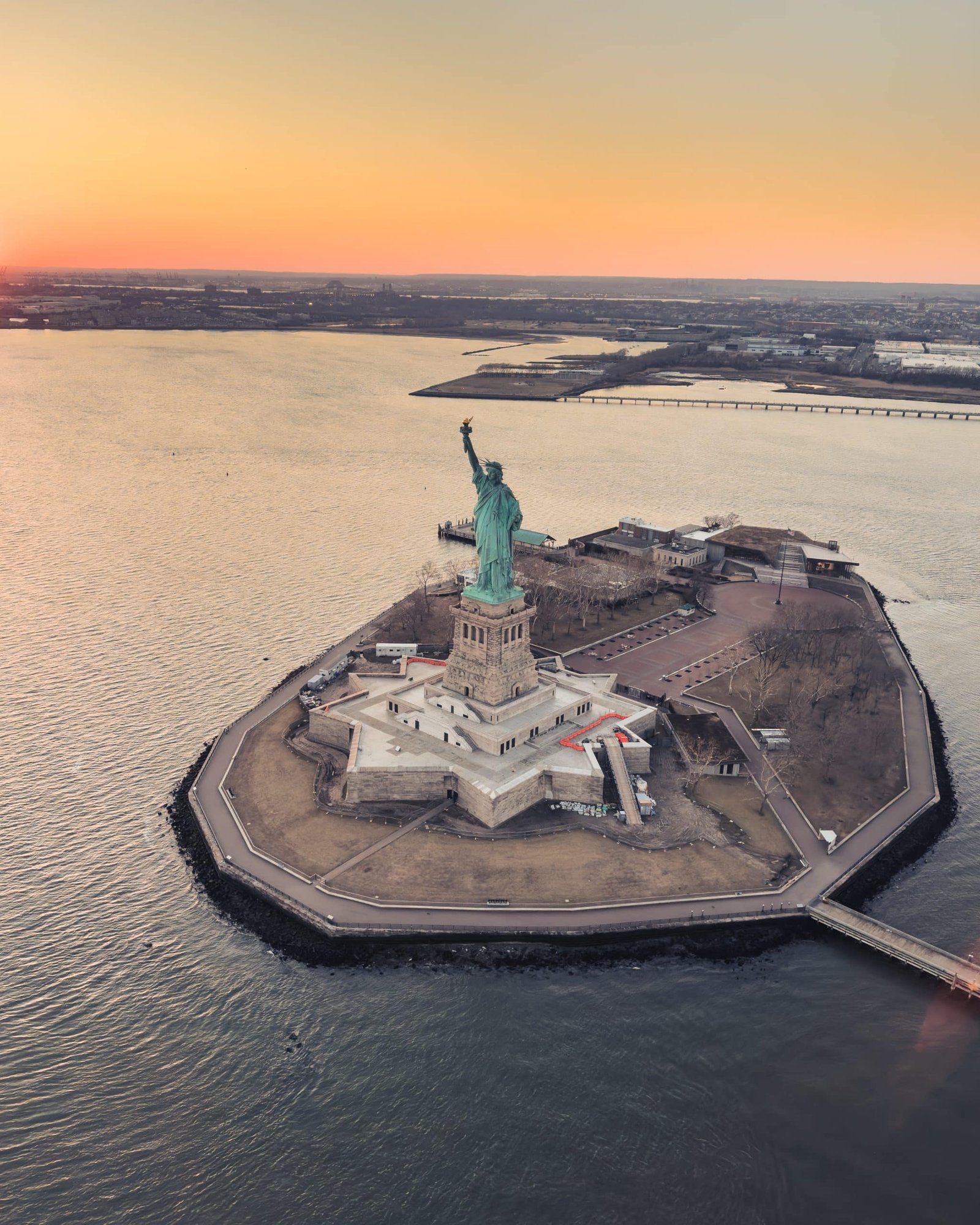Since 1886, the Statue of Liberty, New York‘s iconic landmark, has stood as a symbol of freedom, democracy and the values on which the United States of America was founded. Millions of tourists from all over the world make a pilgrimage to this landmark every year to learn more about its history and significance.
Location and access to the Statue of Liberty
The Statue of Liberty is located on Liberty Island in New York Harbour, a small island that can only be reached by ferry. It overlooks the open sea and welcomes all who enter New York Harbour – a symbol of the welcoming culture for the immigrants who came to America at the beginning of the 20th century. Ferries to the statue depart from both Battery Park in Manhattan and Liberty State Park in Jersey City. The trip from Manhattan takes about 15-20 minutes and offers an impressive view of the New York skyline, including the Statue of Liberty, Ellis Island and One World Trade Centre.
History of the Statue of Liberty
The Statue of Liberty was designed by French sculptor Frédéric Auguste Bartholdi and given a special metal structure by Gustave Eiffel, the engineer behind the Eiffel Tower. It was intended as a gift from France to the United States to mark the centenary of American independence in 1876, but could not be unveiled until 1886 due to delays in funding and construction.
The landmark is 46 metres high and 93 metres in total, including the height from the base to the top of the torch. It depicts a female figure symbolising freedom, holding in her left hand a tablet with the date of the American Declaration of Independence (4 July 1776). In her right hand she holds a torch, symbolising enlightenment and guidance.
The Statue of Liberty was originally made of copper, which has developed a green patina over the years. This green colour is a natural corrosion process of the copper and gives the statue its distinctive appearance. A UNESCO World Heritage Site since 1984, the landmark is not only a national but also an international symbol of freedom and human rights.
Cultural significance and symbolism
More than just a monument in New York, the Statue of Liberty is a world-renowned symbol of freedom, hope and the pursuit of dreams. In the 19th and 20th centuries, when many immigrants came to America, the Statue became a symbol of a new life and a better future. Thousands of people who landed at Ellis Island could see the statue from afar as they reached New York harbour – an emotional moment for those who had left their homeland and hoped for a new life in the ‘New World’.
It embodies not only the idea of freedom for the USA, but also universal human rights. It represents the right to freedom of expression, the equality of all people, and freedom from oppression. Its torch shines not only for the people of the USA, but symbolises the pursuit of freedom and equality worldwide.
The idea of immigration
One of the most important aspects of the Statue of Liberty is its close connection to the history of immigration to the United States. In the late 19th and early 20th centuries, millions of immigrants from Europe, Asia and other parts of the world came to the United States in search of a better future. Many of these immigrants arrived at Ellis Island, where they underwent medical and legal screening before being allowed to enter the United States. The Statue of Liberty was their constant companion, symbolising the promise of a new life.
It was a particularly powerful symbol for the European immigrants who saw it for the first time when they arrived in New York. The idea of freedom and the possibility of starting a new life was central to the newcomers’ journey.

The Statue of Liberty as a tourist attraction
The Statue of Liberty is one of the world’s most famous landmarks and a must-see for any visitor to New York. The island on which it stands is a national park and offers visitors the opportunity to learn more about the history and significance of the statue. The Statue of Liberty Museum, which opened in 2019, offers interactive exhibits that explain the history of the statue and its symbolism. Particularly impressive is the opportunity to visit the statue itself and climb to the viewing platform in the crown. From here you can enjoy breathtaking views of New York Harbour, the Manhattan skyline and nearby Ellis Island.
However, the crown is only accessible by appointment and there are a limited number of tickets available, which must be booked online in advance. Visiting the statue itself is also an unforgettable experience, as visitors get up close and personal with the monumental symbol of freedom.
The Statue of Liberty today
Today, the landmark is not only a monument to history, but also an active part of American political and cultural life. It continues to symbolise the values of the United States and is an important part of American identity. It is a reminder of the ideals on which the country was founded and of the continuing responsibility to uphold those values now and in the future.
The statue also remains a symbol of the challenges of our time, such as fighting inequality and promoting human rights around the world. It reminds us of the need to stand up for freedom and justice – values that are universal beyond the borders of the United States.
The Statue of Liberty in New York is not only a world-famous monument, but also a living symbol of the history, culture and values of the United States of America. Its legacy extends far beyond New York Harbour, touching the hearts of people around the world. A symbol of freedom, democracy and hope, the landmark is both a fascinating tourist destination and an important part of the American cultural heritage.












